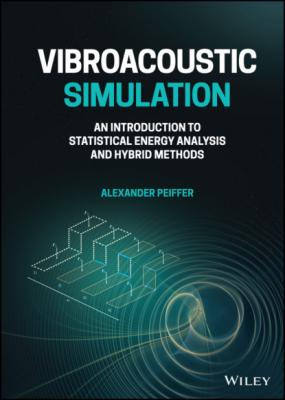Vibroacoustic Simulation. Alexander Peiffer
Чтение книги онлайн.
Читать онлайн книгу Vibroacoustic Simulation - Alexander Peiffer страница 31
 upper F 1 Superscript asterisk Baseline left-parenthesis omega right-parenthesis 2nd Row bold-italic upper F 2 Superscript asterisk Baseline left-parenthesis omega right-parenthesis 3rd Row vertical-ellipsis 4th Row bold-italic upper F Subscript upper N Superscript asterisk Baseline left-parenthesis omega right-parenthesis EndMatrix Start 1 By 4 Matrix 1st Row 1st Column bold-italic upper F 1 left-parenthesis omega right-parenthesis 2nd Column bold-italic upper F 2 left-parenthesis omega right-parenthesis 3rd Column reverse-solidus hdots 4th Column bold-italic upper F Subscript upper N Baseline left-parenthesis omega right-parenthesis EndMatrix right-bracket equals upper E left-bracket Start 1 By 1 Matrix 1st Row bold-italic upper F EndMatrix Superscript asterisk Baseline Start 1 By 1 Matrix 1st Row bold-italic upper F EndMatrix Superscript upper T Baseline right-bracket"/> (1.203)
upper F 1 Superscript asterisk Baseline left-parenthesis omega right-parenthesis 2nd Row bold-italic upper F 2 Superscript asterisk Baseline left-parenthesis omega right-parenthesis 3rd Row vertical-ellipsis 4th Row bold-italic upper F Subscript upper N Superscript asterisk Baseline left-parenthesis omega right-parenthesis EndMatrix Start 1 By 4 Matrix 1st Row 1st Column bold-italic upper F 1 left-parenthesis omega right-parenthesis 2nd Column bold-italic upper F 2 left-parenthesis omega right-parenthesis 3rd Column reverse-solidus hdots 4th Column bold-italic upper F Subscript upper N Baseline left-parenthesis omega right-parenthesis EndMatrix right-bracket equals upper E left-bracket Start 1 By 1 Matrix 1st Row bold-italic upper F EndMatrix Superscript asterisk Baseline Start 1 By 1 Matrix 1st Row bold-italic upper F EndMatrix Superscript upper T Baseline right-bracket"/> (1.203)
In some literature on hybrid theory the complex conjugate of the cross spectral density matrix is used
It is helpful to understand how the matrix coefficients look for the following extreme cases:
Fully uncorrelated signals
Fully correlated signals.
The hermitian operator ⋅H is used, which combines the operations of complex conjugation and transposition.
1.7.1.1 Fully Uncorrelated Signals – Rain on the Roof Excitation
Fully uncorrelated input signals mean that the cross correlation is zero. A model of this is the “rain-on-the-roof” excitation because each drop falls fully independent from its brother drops on the roof. This means that the cross correlation matrix has only diagonal components. All off-diagonal components are zero.
1.7.1.2 Fully Correlated Signals
In this case the signals are correlated and have a clear phase relationship to a reference. Thus, all signals are linearly dependent to this reference. So every column of the cross spectral matrix can by derived by a linear combination of the other columns. So, we don’t need the full matrix and Equation (1.198) can be applied.
1.7.2 Response of MIMO Systems to Random Load
When the input can only be defined by a cross spectral matrix [Sff], the same is true for the response Gm(ω).
with
and so
The system matrix H can be removed from the expected value operator
and finally
This expression determines the cross spectral response of a linear MIMO system excited by random load. Typical numerical system equations have millions of degrees of freedom. Therefore, in many cases the above equation cannot by used straightforwardly, because this would lead to triple multiplication of Hermitian-but-huge matrices. Thus, for random excitation we need different approaches for the response calculation. The conjugate version of Equation (1.208) is
Bibliography
1 Julius S. Bendat and Allan G. Piersol. Engineering Applications of Correlation